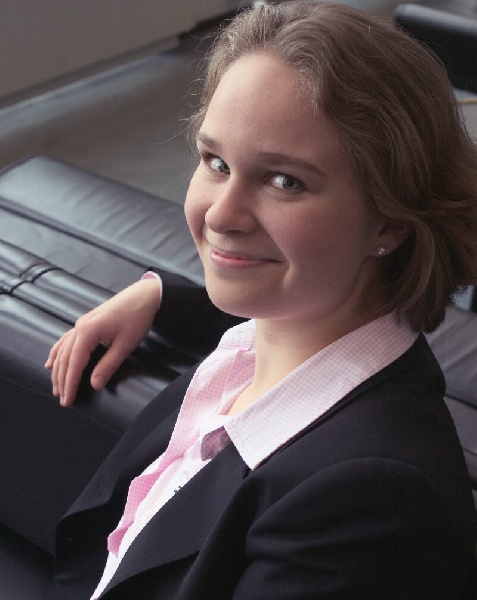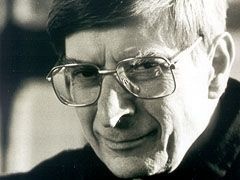Veteran Blomstedt and Newcomer Ollikainen Lead TMC Orchestra at Tanglewood
A Triumphant Evening of Beethoven, Hindemith, and Lidholm
By: Michael Miller - Aug 17, 2006
Tanglewood Music Center Orchestra, August 14, 2006 8:30 PMSeiji Ozawa Hall, Herbert Blomstedt, conductor (Beethoven and Hindemith)
Eva Ollikainen, Tanglewood Music Center Conducting Fellow (Lidholm)
Beethoven, Symphony No. 4 in B flat, Op. 60; Ingvar Lidholm, "Kontakion;" Hindemith, Symphony, "Mathis der Maler"
Tanglewood regulars rave about the Tanglewood Music Center Orchestra, a group composed of music center fellows, young musicians, "who have completed much or all of their formal instruction." In addition to intense study projects and access to all BSO performances and rehearsals, the students are given opportunities to perform as soloists, in chamber groups, and in the TMC orchestra, where they perform a wide repertoire ranging from the Baroque to the present day. While no one would expect of them the refinement and expression of a major orchestra, their skill and energy amply justifies their following. In any case, Seiji Ozawa Hall was full close to capacity Monday evening, some quite possibly attracted by the lower ticket prices.
Monday night Herbert Blomstedt, former music director of the Leipzig Gewandhaus and San Francisco symphony orchestras, shared the podium with TMC fellow Eva Ollikainen. Since his days with the Dresdener Staatskapelle in the 1970's and 80's, Mr. Blomstedt has earned respect for his deep understanding of classical and modern scores, his technical ability, and the directness and energy of his performances. The clarity and precision of his stick technique was not wasted on the TMC Orchestra in Monday's fairly demanding program, which required precise ensemble as well as weight in a wide variety of orchestral textures.
Beethoven's Fourth Symphony in B Flat Major, Op. 60 is the least often performed of his symphonies, and perhaps also the most misunderstood. Written after the "Eroica" and after his first sketches for the Fifth Symphony, the Fourth contains elements of classical style and mood, not to mention straightforward high spirits, which have led some to associate it with earlier works, that is, to pigeonhole it as a transitional work. Yet it lies solidly within Beethoven's "middle period," composed after such characteristic works as the Waldstein and Kreutzer Sonatas and contemporaneously with the Fourth Piano Concerto and the Violin Concerto. When they perform it, mainstream conductors usually muster the full complement of strings, realizing that its kinetic energy would suffer without the weight and volume of a full symphonic climax. The fast movements abound in rapid string passages and short phrases passed from section to section, occasionally syncopated or entering off the beat, both in transparent pianissimo sections and in massive tutti. The symphony is largely about contrasts: between pp and ff, between rapidly moving figures and lyrical tunes, between active music-making and silence. Far from interrupting the forward momentum, the lyrical interludes concentrate it, until its only outlet is a loud outburst by the whole band. Only in the pauses does Beethoven give us a sense of a dramatic suspension of momentum, an illusionary moment of doubt about where the music is headed. Following Mr. Blomstedt's detailed indications, the TMC musicians executed all these challenges, admirably—and also attractively. He made sure to guide them into true pianissimi.His interpretation radiated energy and movement, and he used ritardandi primarily to put a point to particularly significant moments, for example towards the end of the in the development section of the first movement.
The final work in the program, Hindemith's Symphony, "Mathis der Maler," which he drew from music he was currently composing for his opera of the same name, a powerful work which, sadly, is rarely performed. Hindemith is one of Mr. Blomstedt's specialities, and his intimate familiarity with the score and his confidence in projecting it were clear enough. For the orchestra Hindemith's three movement work poses many of the same problems of Beethoven's fourth, multiplied by a number of intricate contrapuntal passages and a great variety of textures and sonorities, evoking the visions of Matthias Grünewald, which he depicted in his famous Isenheim Altarpiece.
This great work needs all the clarity and power the players can give it, and the TMC orchestra did Hindemith's music and Mr. Blomstedt's interpretation of it full justice. The sensitivity of the wind players came out in an exquisite dialogue between clarinet and flute in the second movement, "Entombment," and in the intense sequence of trills in the strings in the last movement, "The Temptation of St. Anthony," the sforzando had a terrific bite—literally so, as I observed a number of people jump in their seats at this wrenching gesture. Most interestingly, in a quiet section towards the end of the first movement, "Angel Concert," the composer called for a long rallentando spread out over several bars. Mr. Blomstedt and his musicians produced a wonderfully gradual slowing of the pace, perfectly matched to the musical phrases and the emotion they expressed, reminding us that Hindemith's symphony was commissioned by Wilhelm Furtwängler, who was a great master of the flexible pulse in music.
Eva Ollikainen, a twenty-seven-year-old Finnish conductor, who has already made a name for herself in the older classics and contemporary music, almost sprinted to the podium to conduct the middle work in the program, waving to the orchestra and the public as if she were about to cross a finish line. However, it was the beginning of—not a race, but of a highly effective performance of Ingvar Lidholm's "Kontakion," a work commissioned in 1979 (the year Ms. Ollikainen was born) for a Soviet tour by the Royal Stockholm Philharmonic Orchestra. Once she raised the baton in an expansive, but clear movement not dissimilar to Mr. Blomstedt's, her extraordinary nervous energy poured straight into the music, not inappropriately so, given the tension which sets this somber work on its path. From there Ms. Ollikainen led the orchestra through a vast range of textures, sonorities, and moods, always with a clear and eloquent beat. The athletic energy with which she began the piece became transmuted into a meditative tension in the slower and quieter passages. Her ability to assimilate Lidholm's intentions, whether the music is making an intimate or a more public gesture attests to her committed study of the score and her ability to bring it across to a general audience. Needless to say Ms. Ollikainen and the orchestra received a long and enthusiastic ovation. I would be most interested to hear her conduct a complete program spanning her entire range of repertoire.



